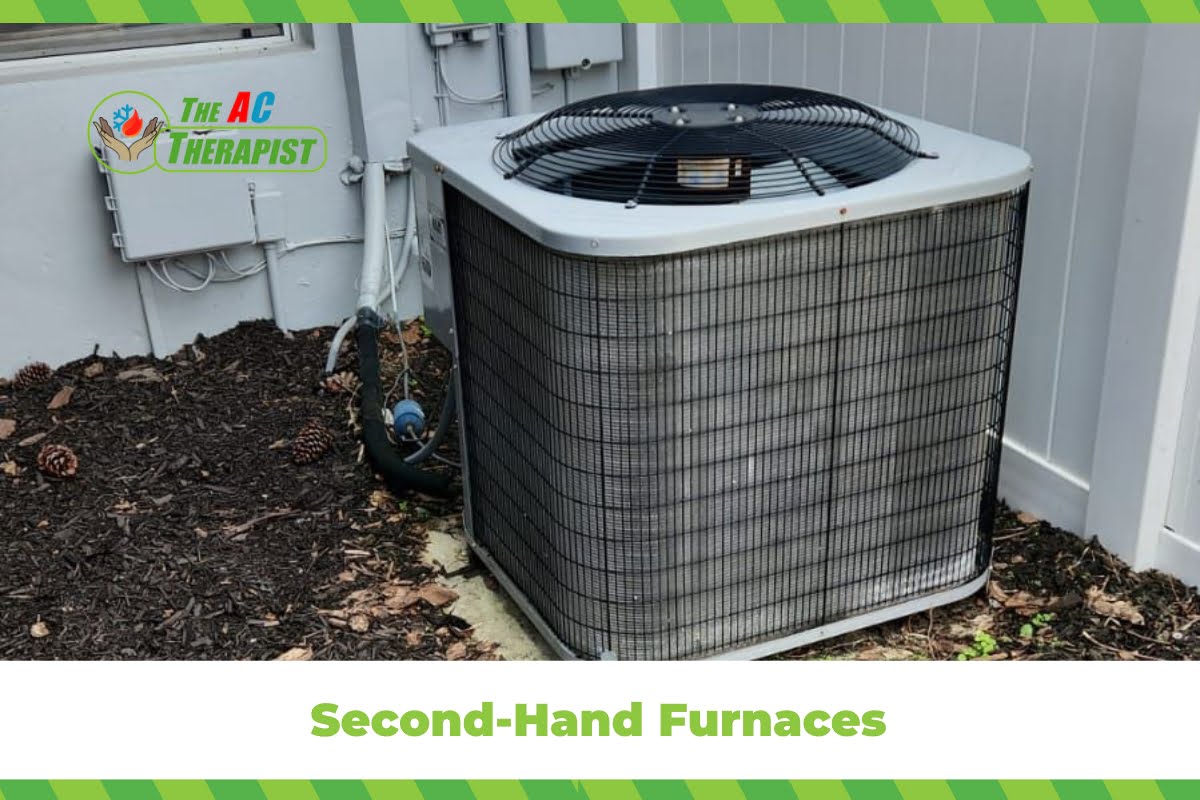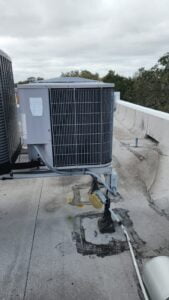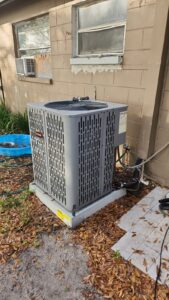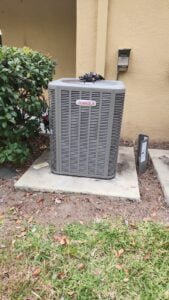Second-Hand Furnaces
Understanding second-hand furnaces involves grasping the concept of previously owned heating units that are available for purchase and use in a new setting. These furnaces come from various sources, such as homes undergoing renovations, upgrades to more energy-efficient models, or buildings being demolished. The idea of buying a second-hand furnace is attractive to many because of the potential cost savings compared to purchasing a brand-new unit. However, it also presents a set of considerations unique to pre-owned appliances, including the condition of the furnace, its efficiency, compatibility with existing systems, and any potential need for repairs or maintenance.
Integrating second-hand furnaces into HVAC (Heating, Ventilation, and Air Conditioning) systems can be a cost-effective solution for those looking to upgrade or replace their heating component without the expense of a brand-new unit. However, it’s essential to approach this option with careful consideration to ensure that the second-hand furnace will be efficient, safe, and suitable for your specific needs. Here are key aspects to consider when incorporating second-hand furnaces into HVAC systems:
When considering a second-hand furnace, it’s essential to evaluate the type of furnace that best fits your needs. Furnaces can vary by the type of fuel they use (such as gas, electric, or oil), their size, efficiency ratings, and the technology they employ. Understanding these factors can help you make an informed decision that aligns with your heating requirements, budget constraints, and environmental considerations.
One of the main benefits of opting for a second-hand furnace is the cost savings. These units are often available at a fraction of the price of new models, making them an attractive option for budget-conscious consumers. Additionally, choosing a second-hand furnace can have a positive environmental impact by extending the useful life of an existing appliance and reducing waste and the demand for new manufacturing resources.
However, purchasing a second-hand furnace comes with its risks. The condition of the unit is a primary concern, as wear and tear from previous use can affect its efficiency and lifespan. The absence of a warranty is another factor to consider, as you may have limited recourse if the furnace fails after installation. Furthermore, ensuring the furnace is compatible with your home’s existing ductwork and that it can be safely installed is crucial to avoid additional costs and potential safety issues.
To navigate these challenges, potential buyers should conduct thorough research, inspect the furnace carefully, verify its history and reason for sale, consider the total cost including installation, and check for any recalls or safety issues associated with the model. Understanding these aspects of second-hand furnaces will enable you to make a decision that balances cost savings with the reliability and safety of your home heating system.
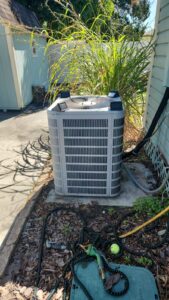
Benefits of Second-Hand Furnaces
The consideration of second-hand furnaces can be appealing for various reasons, especially when approached with an informed perspective. Here are some of the key benefits of opting for a second-hand furnace:
1. Cost Savings
The most immediate benefit of purchasing a second-hand furnace is the significant cost savings. Second-hand furnaces are typically much cheaper than their new counterparts, making them an attractive option for those on a tight budget or looking to save money on their heating solution. This reduced upfront cost can make higher-end models more accessible, offering better efficiency or features than what might be affordable if purchased new.
2. Environmental Sustainability
Opting for a second-hand furnace is a more environmentally friendly choice compared to buying a new one. By reusing an existing furnace, you are extending its life and thereby reducing waste. This choice helps to minimize the environmental impact associated with manufacturing new products, including the consumption of raw materials and energy, as well as the emissions generated during production.
3. Access to High-Quality Brands
The second-hand market can provide access to premium brands and models that offer superior performance and durability. These high-quality furnaces, when maintained properly, can outperform lower-quality new ones, providing efficient heating for your space. This access allows consumers to enjoy the benefits of a top-tier product at a fraction of the cost.
4. Quicker Availability
In some cases, purchasing a second-hand furnace can mean quicker availability and installation, especially during peak demand periods when new models may have longer lead times. This can be particularly beneficial in urgent situations, such as a furnace failure in the middle of winter, where immediate replacement is necessary to maintain home comfort.
5. Potential for Unique Finds
The second-hand market might offer unique or discontinued models that fit specific needs or preferences not met by current models available now. For example, someone looking for a particular size, style, or fuel type might find exactly what they need in the used market.
6. Reduced Depreciation
Like many appliances, furnaces depreciate as soon as they are installed. By purchasing a second-hand furnace, you avoid the initial depreciation hit that occurs with new models. This can be particularly advantageous if you plan to sell your home soon or if you need a temporary heating solution.
Considerations
1. Condition and Lifespan
Assess the overall condition of the furnace, looking for signs of wear, corrosion, or damage. The furnace’s age is also critical, as it can give you an idea of its lifespan. Generally, furnaces have a lifespan of 15-20 years, depending on the model, maintenance history, and usage patterns.
2. Maintenance History
A well-maintained furnace is likely to be more reliable and efficient. Ask for maintenance records to verify that the unit has been serviced regularly. This can include annual inspections, cleanings, and repairs, which can significantly impact the unit’s performance and longevity.
3. Energy Efficiency
Consider the energy efficiency of the second-hand furnace, as older models may not be as efficient as newer ones. This can affect your heating costs and environmental footprint. Look for the Annual Fuel Utilization Efficiency (AFUE) rating, which measures how efficiently the furnace converts fuel into heat.
4. Safety Inspections
Before making a purchase, it’s crucial to have the furnace inspected by a qualified HVAC professional. They can check for potential safety issues, such as cracks in the heat exchanger, which can lead to dangerous carbon monoxide leaks, and ensure that the unit meets current safety standards.
5. Installation and Compatibility
Verify that the second-hand furnace is compatible with your home’s existing heating system, including ductwork, venting, and fuel type. Consider the costs and feasibility of installation, as these can vary significantly based on the specifics of your home and the furnace model.
6. Warranty and Support
Most second-hand furnaces will not come with a manufacturer’s warranty, which means you could face higher repair costs if issues arise. Some sellers may offer a limited warranty or guarantee, so it’s worth inquiring about any available protection.
7. Legal and Environmental Regulations
Ensure the furnace complies with local building codes, safety regulations, and environmental standards. Some regions have specific requirements for furnace installations, including efficiency standards and emissions limits, which could affect your ability to use a second-hand unit.
8. Cost of Repairs and Upgrades
Factor in the potential need for repairs or upgrades to bring the furnace up to your standards or to ensure it operates efficiently. This can include replacing parts, cleaning ducts, or upgrading controls and thermostats.
Essential Tips for Buying Second-Hand Furnaces
When buying a second-hand furnace, it’s crucial to proceed with caution and diligence to ensure that you’re making a wise investment. Here are some essential tips to help guide you through the process:
1. Conduct Thorough Research
Before you start looking for a second-hand furnace, understand the specific requirements for your home, including the type (gas, electric, oil), size, and efficiency rating needed. Familiarize yourself with the market prices of both new and used furnaces to set realistic expectations and identify good deals.
2. Inspect the Furnace Carefully
If possible, inspect the furnace in person before purchasing. Look for signs of wear and tear, corrosion, or damage. Pay special attention to the heat exchanger, as cracks or holes can be dangerous and lead to carbon monoxide leaks. Ensure the furnace components are in good condition and have not been excessively repaired or patched up.
3. Verify Age and Maintenance History
Ask for documentation regarding the furnace’s age and maintenance history. A well-maintained furnace is more likely to have a longer remaining lifespan and operate efficiently. Be wary of furnaces that are near or beyond their typical lifespan (15-20 years), as they may require more frequent repairs or replacement soon.
4. Check for Recalls and Safety Issues
Research the furnace model to see if it has been subject to any recalls or known safety issues. You can find this information on the manufacturer’s website or government consumer safety websites. Avoid purchasing models with a history of safety concerns.
5. Consider Energy Efficiency
Older furnaces may not be as energy-efficient as newer models, leading to higher operating costs. Look for the Annual Fuel Utilization Efficiency (AFUE) rating, and compare it to current standards to ensure you’re getting an efficient unit.
6. Evaluate Installation and Compatibility
Make sure the second-hand furnace is compatible with your existing HVAC system, including ductwork and ventilation. Consider the costs and logistics of installation, which may require professional assistance. Factor these expenses into your overall budget.
7. Seek Professional Evaluation
Before finalizing your purchase, consider hiring a certified HVAC technician to inspect the furnace. They can provide an expert opinion on the condition of the furnace, its safety, and whether it’s a suitable match for your needs.
8. Understand the Return Policy
If you’re purchasing from a dealer or a retailer, inquire about their return policy. Knowing you have the option to return the furnace if it doesn’t meet your expectations or if problems arise shortly after installation can provide peace of mind.
9. Budget for Potential Repairs
Even with a thorough inspection, unexpected issues may arise with a second-hand furnace. Set aside a portion of your budget for potential repairs or part replacements to avoid financial strain later.
10. Negotiate the Price
Based on your research and the furnace’s condition, don’t be afraid to negotiate the price. Sellers may be willing to lower the price if the unit has been on the market for a while or if you point out any concerns during your inspection.
Most common questions asked of homeowners about Second-Hand Furnaces
1. How much cost savings can I expect with second-hand furnaces?
Homeowners frequently inquire about the cost savings associated with second-hand furnaces. The savings from purchasing second-hand furnaces can be substantial compared to buying new ones, but it’s important to factor in potential costs for any necessary repairs or upgrades.
2. What should I look for when inspecting second-hand furnaces?
Another common question revolves around what to look for when inspecting second-hand furnaces. Homeowners want to know how to assess the condition of second-hand furnaces, including signs of wear and tear, maintenance history, and efficiency ratings.
3. Are there specific safety concerns with second-hand furnaces?
Safety is a major concern for homeowners considering second-hand furnaces. They often ask about potential safety issues, such as carbon monoxide leaks or fire hazards, associated with second-hand furnaces and how to mitigate these risks.
4. How do I determine if second-hand furnaces are compatible with my existing HVAC system?
Compatibility is crucial, so homeowners ask how to ensure second-hand furnaces will work with their current HVAC setups. This includes questions about sizing, ductwork compatibility, and fuel type for second-hand furnaces.
5. Can I install second-hand furnaces myself, or should I hire a professional?
The installation of second-hand furnaces is another area of inquiry. Homeowners want to know if DIY installation is feasible or if it’s better to hire a professional to install second-hand furnaces to ensure safety and efficiency.
6. What are the energy efficiency considerations for second-hand furnaces?
Energy efficiency is a priority for many homeowners. They often ask how to evaluate the energy efficiency of second-hand furnaces and understand the impact of second-hand furnaces on their energy bills.
7. What are the risks of buying second-hand furnaces?
Understanding the risks involved with purchasing second-hand furnaces is essential for homeowners. They seek information on the common pitfalls, such as hidden damages or shorter lifespans, associated with second-hand furnaces.
8. Where is the best place to buy second-hand furnaces?
Homeowners also ask for recommendations on where to find reliable second-hand furnaces. They want to know the best sources for purchasing second-hand furnaces that are in good condition and offer a good value.
Unlocking Warmth and Savings: A Comprehensive Guide to Second-Hand Furnaces by The AC Therapist
As we come to the end of our detailed exploration into the advantages, considerations, and practical tips surrounding second-hand furnaces, it’s evident that with the right approach, these units can offer a smart, economical solution for homeowners seeking to improve their heating systems. At The AC Therapist, our commitment extends beyond just ensuring your comfort—it’s about empowering you with the knowledge and tools necessary to make choices that are both financially savvy and environmentally responsible.
The journey to selecting and installing a second-hand furnace is marked by careful consideration of several critical factors. The condition of the unit, its compatibility with your existing HVAC infrastructure, its energy efficiency, and potential safety concerns are all paramount in making an informed decision. The allure of substantial upfront cost savings that second-hand furnaces offer can be tempting, but it’s essential to balance these initial benefits with the foresight of potential maintenance or upgrade needs and their associated costs.
At The AC Therapist, we believe that the decision to opt for a second-hand furnace should not be made lightly. It requires thorough research, a keen eye for detail during inspections, and a clear understanding of the maintenance history of any prospective unit. Our advice is always to prioritize safety and efficiency, seeking out units that come with a clear and transparent record of upkeep. Should you decide to proceed with a second-hand furnace, our team is ready to offer expert guidance through the selection process, ensuring that the installation is performed seamlessly and adheres to the highest standards of safety and efficiency.
Moreover, we understand that navigating the second-hand market can be daunting. That’s why The AC Therapist is dedicated to providing ongoing support and maintenance services, helping you maximize the lifespan and performance of your second-hand furnace. Our goal is to ensure that your heating solution—whether second-hand or new—delivers reliable warmth, comfort, and efficiency to your home.
In conclusion, embracing second-hand furnaces as a viable option for heating your home can be a wise decision when done with diligence, care, and the support of knowledgeable professionals. If you’re considering a second-hand furnace or have any questions about heating solutions, The AC Therapist is here to help. Together, we’ll navigate the complexities of HVAC solutions, ensuring that your home remains a cozy sanctuary for you and your loved ones, all while keeping an eye on sustainability and cost-effectiveness. Reach out to us today, and let’s take the first step towards a warmer, more sustainable home together.

